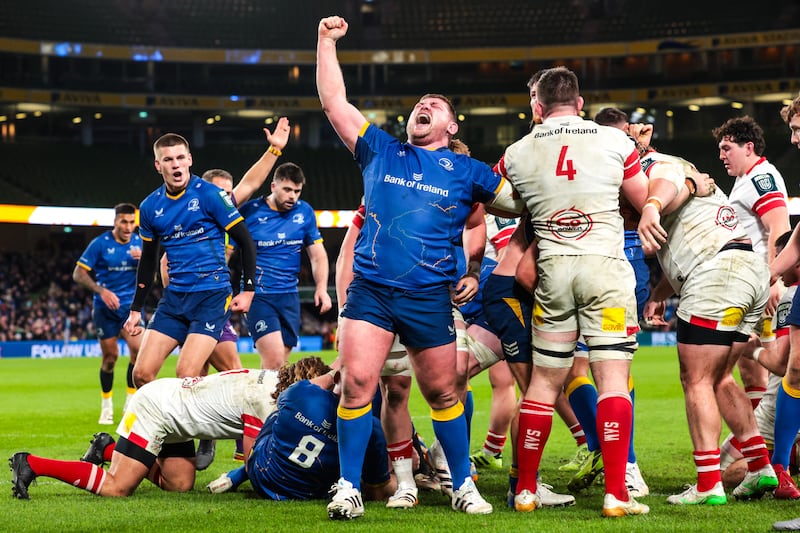It's a view that will be experienced for only the 100th time next Saturday, August 3rd, when more than 600 men and women take part in the 100th Liffey Swim.
Gathering on Victoria Quay at the Guinness Brewery gates, the separate men’s and women’s fields will descend the steps to a pontoon before taking the plunge. Twelve bridges and 2,200 metres later, in a frantic and feverish swirl of arms and legs, the 600 will have taken in glimpses of many of the city’s main landmarks before emerging at Custom House Quay, with the 100th Liffey Swim winners confirmed.
Mind you, it’s a view of Dublin many people would turn their nose up at; the very notion of swimming in the Liffey provokes a jaundiced response bordering on disgust. “Is it safe? Do you have to get injections before getting into that?”

The swim was born
It was similar concerns that gave birth to the race in 1920.
Like many a good idea, it came from idle chat among friends. Cyril Smith, a retired Trinity College Dublin microbiologist who has documented the race’s history, takes up the story.
“Three Clontarf swimmers, Harry Brennan, Gus Cullen and Bernard Fagan, were going home after swimming in the Tara Baths when Fagan, on Butt Bridge, said: ‘I’ll put up a cup for a race in the Liffey.’
“Fagan was very important because he was a Dublin Corporation engineer, so he was able to analyse the water quality and convince everyone it was safe. The idea was brought to the Leinster branch of the Irish Swimming Association, and from there the idea became a reality.”
On Thursday July 22nd, 1920, the Liffey Swim was born – with Fagan coming home third behind Jack Kennedy in a field of 27 men.
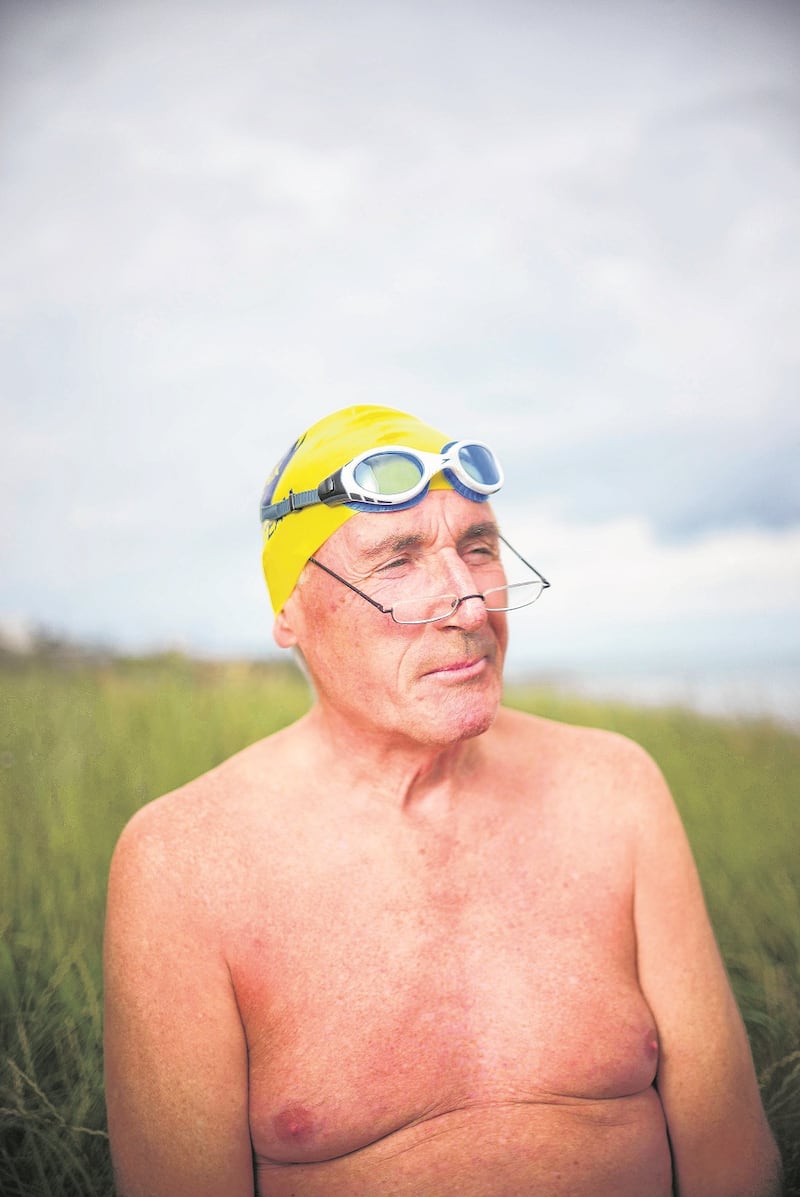
An unbroken run of 98 Liffey races has followed that inaugural 1920 event, albeit that for four years the race was held at the Bull Wall in Dollymount (1936-1939). For three years in the late 1970s it moved upriver to Islandbridge. The reason for the location moves? You guessed it – water quality concerns.
Just like the first race in 1920, next Saturday's races will be organised on a handicap basis. While a horseracing handicapper adds weight to level the playing field, weight is often an advantage in open-water swimming, where cold temperatures and often choppy waters have to be combatted. Instead, the handicappers of race organisers Leinster Open Sea will add time – and lots of it – for the fastest swimmers, who will leave Victoria Quay up to 16 minutes after the first swimmers start.
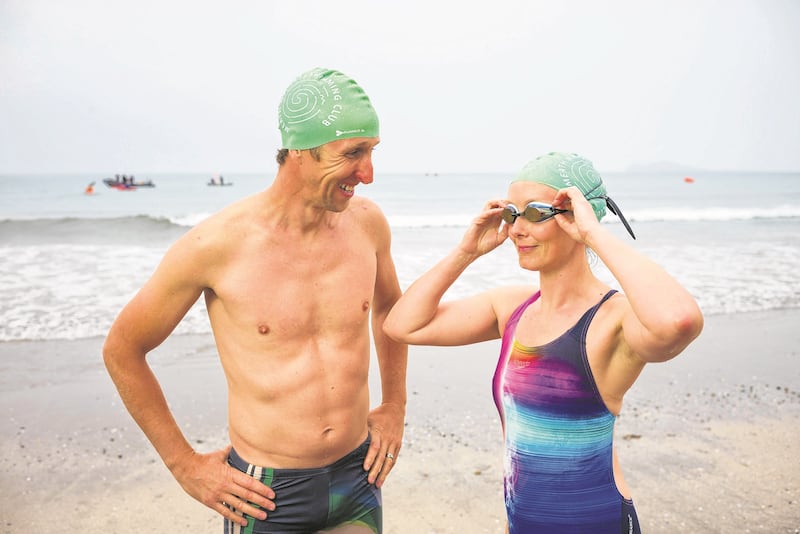
So, who are the 600? They are swimmers, obviously, but a motley crew in terms of age, talent and experience in the sport. While some got wet behind the ears from an early age, and competed at a high level for club and country (some still race in international masters’ swimming events, for those aged over 25), many others took to the sport late, or returned to the water after years as beached landlubbers. Swim Ireland’s Swim for a Mile programme has provided a pathway for these lapsed swimmers, as well as swimmers and triathletes who are not from a swim club background.
Sea swimming has become a popular if niche pursuit of middle-aged people who still aspire to fitness and enjoy a smidgen of competition. That is reflected in the composition of the Liffey qualifiers – more than two-thirds of next weekend’s competitors will be over 40. There will be septuagenarians on the pontoon too.
It is an evolution from the event’s earlier years, which were dominated by teenagers – the race’s youngest winner was Francis Chalkie White, who was 11 when he won in 1966. Teenagers are still involved, but under-18s require parental consent.
The race is far from a box-ticking, bucket-list affair; there is serious commitment involved. No wetsuits are allowed, and modern swimsuits for streamlining or protection from jellyfish are not only frowned upon, but banned. Budgie-smuggling swimwear is de rigueur for the men. You must join a club and participate in a summer of qualifying sea races that take place on the east coast every weekend, from Portrane to Seapoint, Wicklow Harbour to Curracloe. Next week’s participants will have completed a minimum of six 1,600-metre qualifying events since the end of May - most will have done more than 10.
Many of the participants are rooted in the race’s culture and traditions, drawn from the city’s water polo and swimming clubs such as Half Moon, North Dublin, Clontarf, Sandycove, Guinness and Aer Lingus. The race is about family tradition too – husbands and wives, fathers and mothers, brothers and sisters, sons and daughters. The Wilkes family of North Dublin, the Dunnes of Half Moon, and the Nolans of Clontarf are all supplying multiple entries this year, just like they have for decades.
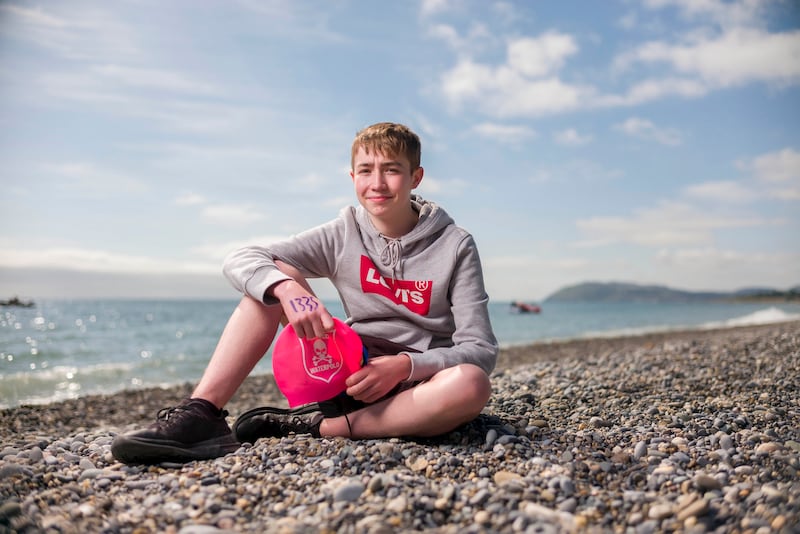
Brian Nolan, chair of Leinster Open Sea’s Liffey Swim organising committee, is a good example, coming from a long line of Liffey swimmers. “Next week there will be three Eamon Healys – grandfather, father and son – lining up for the North Dublin club while five O’Neill brothers will tog out for the NAC club,” he says. “I’ll be swimming with my son Seán, and my father and family swam it before me. It’s a huge family day.”
Recognition for women
The Liffey Swim’s history reflects Irish social history too, particularly the battle of women to gain equality. Race chronicler Cyril Smith has looked closely at the issue. “It always fascinated me why women weren’t allowed. There’s an occasional letter to the papers in the 1920s asking why they weren’t, but there are no minutes existing from Leinster Branch meetings to suggest it was an issue.
“You have to remember that mixed bathing was frowned upon then – men had one area of the beach and women and children had another. In those early days, there were crowds of sixty, seventy, eighty-thousand on the quays for the race, and I suppose there was a view that such crowds shouldn’t be goggling at women,” says Smith.
The exclusion was copperfastened in a general public debate in the 1930s around women’s participation in sport. “Mixed athletics are a social abuse,” the then Blackrock College principal, the Rev John Charles McQuaid, had written in a letter to newspapers at the time. He poured more fuel on the fire in his 1950 Lenten pastoral when – as then archbishop of Dublin – he suggested it was “unbecoming for them [women] to display themselves before public gaze”.
While such puritan strictures began to break down in the 1960s, it was the late 1970s before the Liffey Swim welcomed women – and even then it was only by degrees. A shorter women’s race was briefly introduced between 1977 and 1979, when the race took place at Islandbridge. When the men’s race returned to the city quays, the women’s race became the Upper Liffey race. Women were finally put on an equal footing in 1991, when Siobhán Hoare won the first proper women’s Liffey Swim.

Claire O’Dwyer, a Liffey veteran who will swim the 100th edition at the age of 78, recalls some talk among women sea swimmers about their exclusion, but also “relief that they didn’t have to swim in the dirty Liffey”.
“The first year I didn’t do it because my family thought it was insanity,” she says. “The second one I pretended I was going into Dublin for shopping. I came home and said, ‘I swam the Liffey.’ The shock-horror on my husband’s face!”
O’Dwyer has competed most years since, except for the years she was competing – and often winning – at international masters’ events around the world.
Ahead of the 100th edition, what is the race’s place in the city’s sporting and cultural landscape? Says Cyril Smith: “Irish people and Dubliners love their sport, and are proud of the fact that an event like this has gone on for 100 years. It’s an institution in Dublin.”
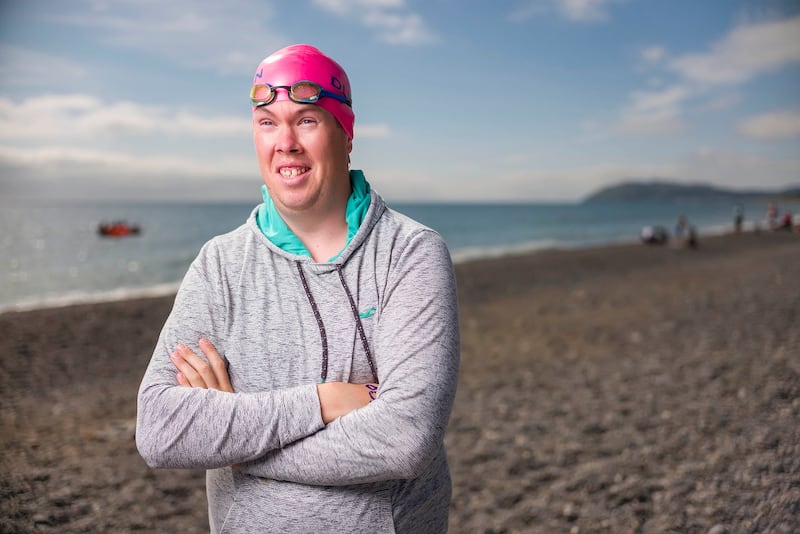
The post-race experience of last year’s winner, Paul O’Flynn, captures the enduring camaraderie and spirit of the event. “My favourite bit afterwards was, as is tradition, when we went to Mulligan’s. It was a gorgeous day and I had the cup and there were about 200 people out on the street. As I walked around, the amount of people I met who had won, or their dad had won . . . there’s brothers that have won it, fathers and children. That was really special. I know it sounds funny, but you feel part of the history.”
Final week
Brian Nolan and his hardworking Leinster Open Sea committee are in the final countdown now. All the boxes have been ticked with Dublin Corporation and the sponsor Jones Engineering. A couple of races will take place this weekend. Handicaps will be decided and posted for the 600-plus competitors to chew over, and pre-race favourites will emerge on the back of them. Race gear, including numbered hats based on handicap (highest numbers are the fastest swimmers), will be distributed on Thursday.
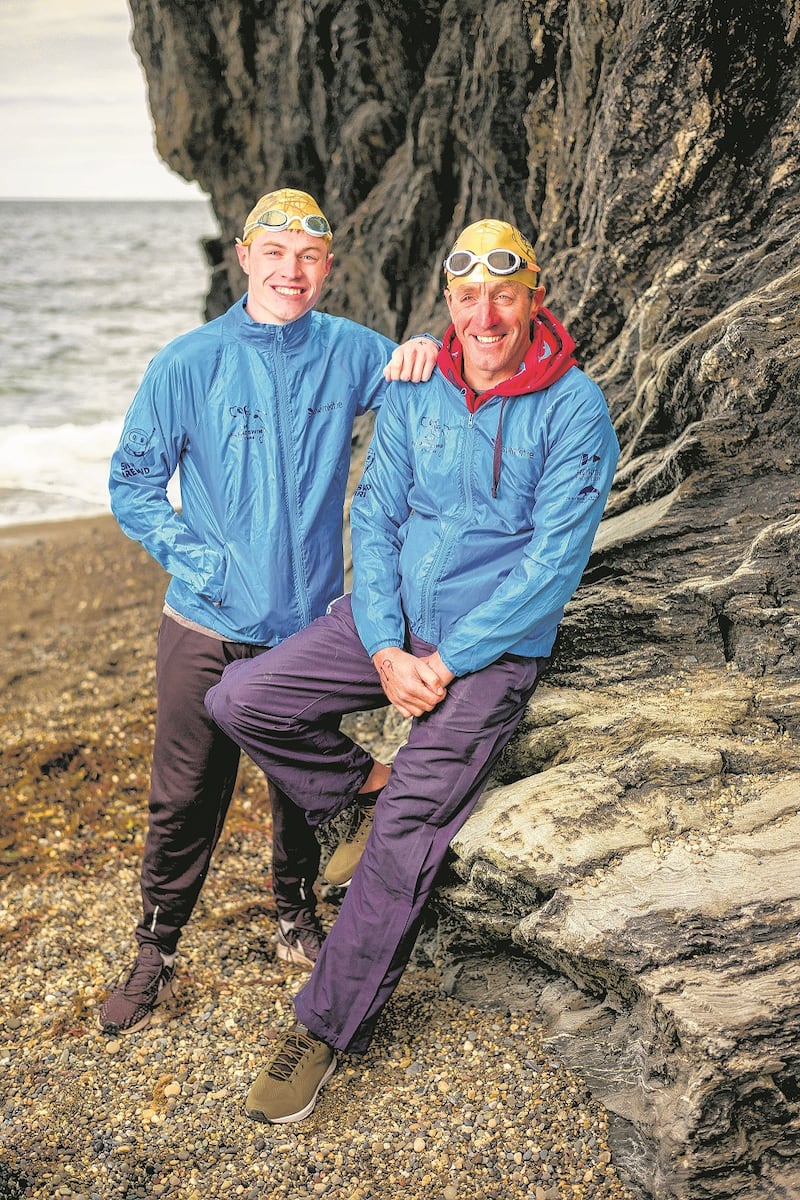
The 600 will gather on the quays, across from the Guinness gates, early next Saturday morning. The early men’s starters will belt out Molly Malone before being sent on their way by starter Bobby Nolan – with a little help from the lord mayor – at 1pm. The women’s race will follow an hour later.
The finish at Custom House Quay will see the traditional Dublin Fire Brigade quick-rinse showers for all swimmers. Snipes of cleansing whiskey will be taken. Winners will be crowned.
A right old party will follow.
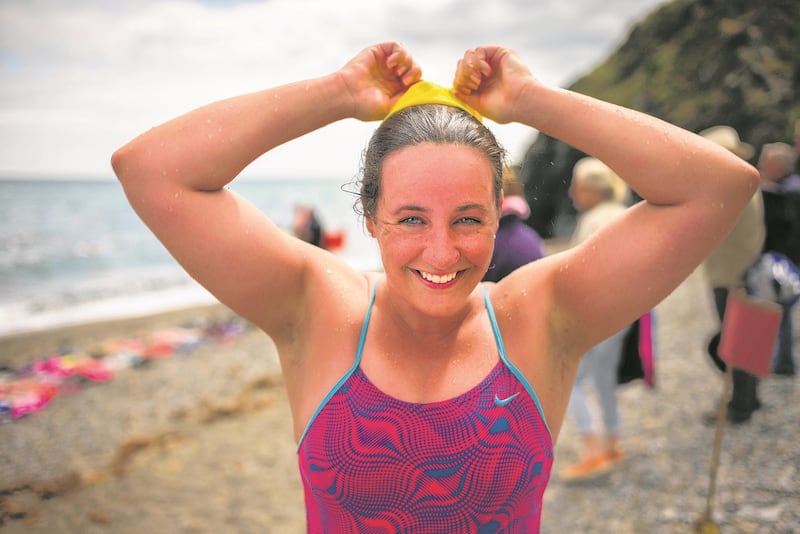
Do you want to do the Liffey swim?
You too can join a club, get your picture taken in front of the Guinness gates with some strapping men (or women), and swim 2km down the Liffey. This writer (2nd from right, below returned to swimming after more than 30 years in early 2016 at the age of 50. The first step was Swim Ireland's Swim-A-Mile programme in a pool, followed by the open water equivalent. Participation in open-water swimming is actively encouraged by Swim Ireland, and its current chief executive Sarah Keane, president Declan Harte, and chairman Peter Conway are regular participants on the Leinster Open Sea circuit.
By early summer, after joining Aer Lingus Masters, I was dipping my toes in the Irish Sea, joining club colleagues at Low Rock in Malahide, swimming the buoys, acclimatising and gaining confidence as I went. By June, I was swimming my first open-water race, and by September I had completed my first Liffey Swim.
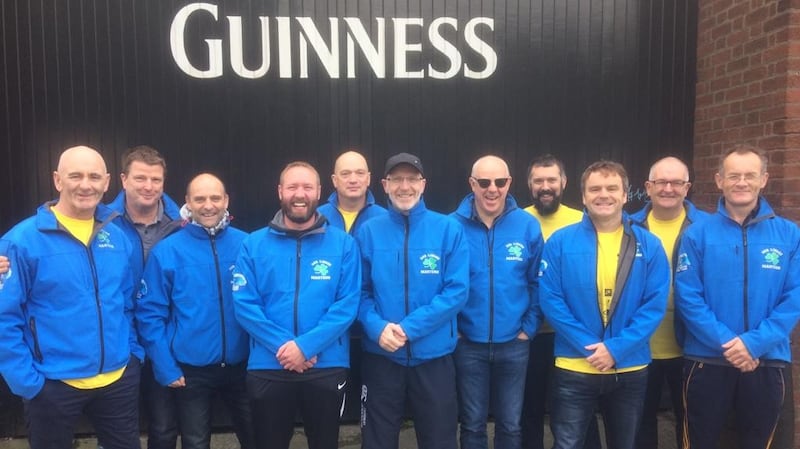
Swimmers who want to compete in the Liffey Swim must have competed in at least six qualifying swims as part of the Leinster Open Sea calendar. Entrants living outside Leinster must complete four qualifying swims in their areas, and those from overseas have to show they are competent swimmers.
For more information, see leinsteropensea.ie and swimforamile.com
Liam Ryan is an Irish Times journalist and will be swimming his fourth Liffey Swim on Saturday, August 3rd.











